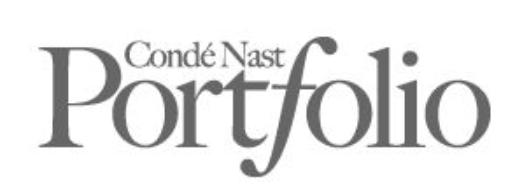Condé Nast Portfolio Expands Online Apps with Google, Facebook and LinkedIn

Condé Nast Portfolio has been quietly building its www.Portfolio.com ad-supported website with an emphasis on audience quality vs. size, although the site now boasts somewhere between 900,000 and 1.7 million unique monthly visitors, depending whether you believe data provided by comScore (871,000), Nielsen NetRatings (1.26 million) or the publisher (1.7 million).
While these numbers are dwarfed by CNN Money and Forbes.com, both of which claim more than ten times the traffic, Portfolio.com is less than six months old and Portfolio.com general managerAri Brandtpoints out "we all want to accommodate our advertisers but when you have 15 or 20 million users your demographics become diluted. The high concentration of senior level executives that many advertisers are looking for just isn't there."
Reach senior ad execs. Advertise on JackMyers.com
Condé Nast Portfolio developed its Web operation under Brandt, who joined the company from Yahoo! in mid-2006, as the latest site under the Condé Nast umbrella, which includes CondeNet, host of such award-winning sites as Style.com, Men.Style.com and Epicurious.com, and the websites of Condé Nast magazines such as Vogue, Wired, Glamour, GQ, Allure, Self, Lucky, Vanity Fair, Bon Apetit and Details.
Unlike other Condé Nast magazine companion sites, Portfolio.com requires extensive 24/7 support to deliver hard news, according to Brandt. Portfolio publisher and group president David Carey, who last week assumed added responsibilities for Wired Media and the Golf Digest Group, explains that the more targeted audience strategy has enabled Portfolio.com to attract new advertisers, including Accenture, Capgemini, Siemens, and St. Regis Hotels. At least ten of 40 Portfolio.com advertisers had not previously advertised with Condé Nast websites.
In 2008 Portfolio.com is joining Google’s Open Social platform, which enables sites to write applications for multiple social networking sites, and is planning applications for Facebook.It already has headlines onLinkedIn and a widget on the financial gossip blog DealBreaker. The company has been testing fully open widgets (Jack Myers Media Business Report, July 30),as well. "If we think something’s going to stick or work for our audience, we’ll be more aggressive there, and if not, it will be deemed a test," Brandt says. The site is also developing what Brandt promises will be a "unique video strategy," expanding coverage of business travel to take advantage of the popularity of the Portfolio.com "Seat 2B" travel blog. Brandt and his team are exploring additional opportunities to increase the numbers of bloggers and columnists, and plans to deliver analytical coverage of high profile events like the World Economic Forum in Davos and the TED Conference in Monterey and Aspen, with which Portfoliohas a marketing relationship.
"We’ve clearly carved out a different segment of this category that people didn’t think was possible," Carey says, while scoffing at the $100 million figure tossed around as having been spent on Portfolio’s launch. "Would we spend $100 million over five-to-six years for the print and digital operations? Sure, that’d be a great deal." Carey says that since Condé Nast is a private company, they have the luxury of allowing years for the website and more years for the magazine to become fully viable. Indeed, it could take that long in a business magazine marketplace in which revenues and ad pages have been flat or shrinking for a decade, and in which competition is intense. Business Week is reported to lose $12 million annually and the magazine and website have recently been redesigned. CNN Money has been revamped to deliver extensive video. Forbes.com and a new Fortunewebsite (that Carey notes is similar in look and feel to Portfolio.com) have launched several new applications.
Read TiVoWorthy-TV Everyday at JackMyers.com
Carey projects that an estimated one-quarter of Portfolio's total ad revenue will come from the website, growing to 30 percent in 2009. The largest share of advertising for Portfolio.com has been for financial brands, followed by business-to-business and corporate image, technology, automotive and a smattering of consumer electronics, real estate and -- this being Condé -- retail and luxury. But please don’t call Portfolioa “lifestyle” brand, even if there are ads for watches and clothes, he urges. "We don’t have a lot of wine coverage. We really don’t devote a lot of the site to renting villas," Carey quips. "It’s business coverage delivered in a really stylish and engaging way."
At the site there’s constant balance between design and Web 2.0 imperatives; between ad dollars and protecting the brand. "We could bring in even more advertisers, but we are very selective about the advertisers we do bring in," Brandt says. "We want to make sure they are all prestigious brands." To preserve the site's look and feel, Portfolio.com is limited to 21 sub-sections like "national news" and "company profiles," compared to more than a hundred sections at CNNMoney.com and BusinessWeek.com. Links to social networking applications like Digg and Deliciousare relatively hidden. Portfolio.com has partnered for content delivery with ABCNews.com, MSNBC, Washingtonpost.com, Entrepreneur,Yahoo and AOL.
Ari Brandt can be reached at Ari_Brandt@condenast.com .
David Carey can be reached at David_Carey@condenast.com .
Dorian Benkoil is a regular contributor to Jack Myers Media Business Report.

